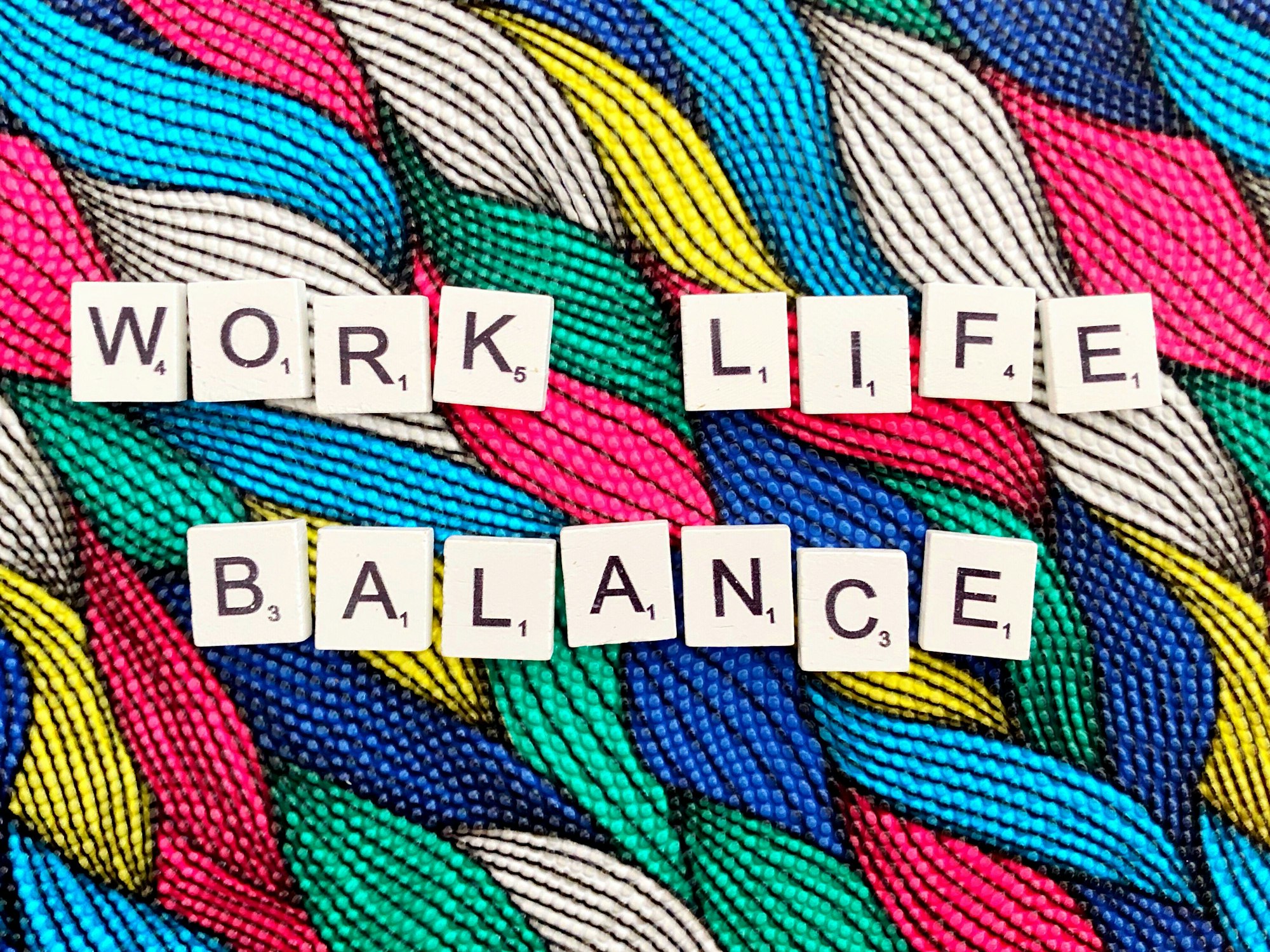
Feeling overwhelmed by the constant juggling of personal and professional tasks? You’re not alone. The demands on your time can pile up quickly, making it challenging to stay organized and productive.
Enter the Kanban method—a simple yet effective approach to managing your tasks with greater clarity and efficiency.
Originally developed for manufacturing, Kanban has found a new lease on life helping people like you streamline their to-do lists, prioritize tasks, and ultimately achieve a better work-life balance.
“Personal Kanban is a great way to visualize and manage your work and life. Think of it as a mirror showing you what you’re doing and what’s left to do.”
In this guide, you’ll learn how to apply Kanban techniques to both your personal and professional spheres, transforming chaos into order with every sticky note you move. Let’s get started on this journey to a more organized and balanced life.

Balancing personal and professional tasks can often feel like juggling a dozen balls at once—some of them seem bound to hit the ground. Enter Kanban, a method that helps you keep everything airborne with ease.
By visually organizing your tasks on a Kanban board, you gain an immediate overview of your obligations, deadlines, and priorities.
Start by creating columns that represent different stages of task completion, such as “To-Do,” “In Progress,” and “Completed.”
For a more nuanced approach, you can add columns like “Pending Approval” or “On Hold.” The beauty of Kanban lies in its flexibility, allowing you to tailor the board to meet your specific needs.
Here’s how to set up your Kanban board:
By visualizing your tasks, you’ll be able to see at a glance what you need to focus on, helping you allocate time effectively.
This method not only aids in completing professional responsibilities but also ensures you make time for personal life, striking the elusive work-life balance.
Furthermore, Kanban makes it simple to adjust as priorities change. Simply drag a card from one column to another, and you can immediately identify what requires your attention.
This adaptability is key to maintaining harmony between work and personal life.
Among the many advantages that Kanban offers for managing both personal and professional tasks, one of the standout benefits is enhanced visibility into overall progress.
By using Kanban boards, you can see at a glance where each task stands, which fosters better planning and prioritization. This clear visual representation helps in identifying and resolving issues more swiftly, keeping projects on track.
Another major benefit is the improvement in team morale and collaboration. Because everyone can see the workflow and current task status, team members can more easily coordinate their efforts.
This transparency enhances communication, ensuring that everyone is on the same page and working towards common goals.
One of the key features of Kanban is the ability to set Work In Progress (WIP) limits, which prevents overloading and keeps productivity high.
By limiting the number of tasks that can be worked on at any given time, teams can focus on completing current tasks before taking on new ones. This approach not only boosts quality but also speeds up project completion times.
Kanban’s flexible nature allows for quick adjustments and adaptations during project development. If a priority shifts or an unexpected issue arises,
Kanban makes it simple to reorganize and redistribute tasks without disrupting the entire workflow. This adaptability is especially valuable in dynamic environments where change is a constant.
For personal task management, the visualization aspect of Kanban is equally beneficial.
By converting your goals and to-dos into visual tasks on a board, you can better understand what needs to be done, track your progress, and maintain motivation.
Whether you’re planning a vacation or coordinating home improvement projects, Kanban keeps everything organized and visible.
Finally, Kanban helps in uncovering inefficiencies and workflow issues. By regularly reviewing your Kanban board, you can spot recurring bottlenecks and areas where tasks tend to get stuck.
This ongoing review process provides invaluable insights that can be used to optimize both personal and professional workflows, leading to more efficient and effective task management.

Implementing Kanban methods can revolutionize how you approach both your personal and professional life.
The first step is setting up your Kanban board, which can be physical using sticky notes and a whiteboard, or digital with tools like Trello or Jira.
Organize your board into columns that represent different stages of your workflow, such as “To Do,” “In Progress,” and “Done.”
Visualize Your Tasks: Start by brainstorming all your tasks and writing them on individual cards or sticky notes. Each card should represent a single task.
This practice helps you get a clear picture of your workload, making it easier to prioritize your tasks.
Limit Work in Progress: A crucial principle of Kanban is to limit the amount of work in progress (WIP) at any given time.
This focus ensures that you do not spread yourself too thin and can complete tasks more efficiently. Set a limit for each column on your board to avoid multitasking pitfalls.
Continuous Improvement: Kanban is not a one-size-fits-all solution and requires continuous tweaking. Regularly review your board to identify bottlenecks and areas for improvement.
Are certain tasks constantly moving back to the “To Do” column? Analyze these tasks to understand why and make necessary adjustments.
By following these steps, you can fine-tune your task management system to better support a balanced lifestyle.
Kanban provides a dynamic and visual way to keep track of your responsibilities, making it easier to achieve harmony between your personal and professional commitments.
The first and most fundamental principle of Kanban is to visualize your workflow. This means creating a visual representation of your tasks and the stages they need to go through before completion.
Imagine starting your day with a clear snapshot of what needs to be done. By setting up a Kanban board, whether with physical sticky notes on a wall or through a digital Kanban tool, you create an at-a-glance view of your tasks.
This visualization not only aids in prioritizing but also helps to notice bottlenecks and inefficiencies in real-time.
What’s powerful about Kanban is its simplicity. With a quick glance, you can see exactly where every task stands and what needs immediate attention.
By continuously updating your Kanban board, you maintain an accurate, real-time reflection of your workflow. This ongoing visual feedback loop is essential for staying organized and productive.
Moreover, this visualization encourages accountability. Teams can see who is working on what, and managers can easily track progress.
It brings transparency to the workflow, helping everyone stay aligned and focused on shared goals. Ultimately, by visualizing your workflow, you build a more efficient, transparent, and collaborative environment.

One of the key benefits of employing Kanban in a professional setting is the significant boost in workplace efficiency. Through its visual nature, a Kanban board makes it simple to identify tasks and workflow bottlenecks instantly.
Another crucial aspect is the concept of Work In Progress (WIP) limits. Setting WIP limits ensures that team members are not overloaded with too many tasks at once.
This not only helps maintain a balanced workload but also increases the quality of the output by allowing the team to focus on completing tasks before taking on new ones.
The clearer focus leads to a smoother workflow and reduces the need for multitasking, which can often decrease efficiency.
Kanban also integrates easily with other Agile methodologies, making it flexible and adaptable to your team’s specific requirements.
Whether you are part of a small team working on a single project or a large organization handling multiple overlapping initiatives, Kanban can scale to meet your needs.
Tools like virtual Kanban boards further enhance this adaptability by allowing remote teams to collaborate seamlessly in real-time.
In addition to improving workflow visualization and task management, Kanban fosters enhanced communication and collaboration among team members.
Regular stand-up meetings around the Kanban board can facilitate quick updates and discussions on any impediments, ensuring that everyone is on the same page.
This continual feedback loop helps in making adjustments promptly, leading to more agile and responsive project management.
Ultimately, professional Kanban is not just about getting tasks done faster, but about doing them more effectively.
By providing a clear, visual overview of the workflow and enabling better resource management, Kanban helps teams to become more organized, productive, and aligned towards their goals.
Boosting your productivity using Kanban doesn’t have to be complicated. Here are some tips and tricks to help you get the most out of your Kanban board:
Swimlanes are horizontal lines on your Kanban board that help categorize tasks by different criteria, such as priority, team member, or project.
By segregating tasks, you can easily see the progress within each category, keeping your board organized and your workflow streamlined.
One powerful aspect of Kanban is the ability to limit the number of tasks in progress. By setting WIP limits, you ensure that your focus remains on completing tasks rather than starting new ones.
This approach minimizes multitasking and helps maintain high-quality output.
Make it a habit to review your Kanban board regularly. Daily stand-ups, weekly reviews, or monthly retrospectives can provide insights into your workflow, highlight bottlenecks, and allow for continual improvements.

Color coding your Kanban cards can significantly enhance visual clarity. Different colors can represent various task types, priority levels, or team members.
This visual differentiation makes it faster to interpret the board at a glance, boosting overall efficiency.
While physical boards with sticky notes are effective, digital Kanban tools like Trello, Asana, or Jira provide added flexibility.
These tools offer features like automated notifications, easy card updates, and integrations with other productivity apps, enabling remote team collaboration and task tracking from anywhere.
Using Kanban to its fullest potential means continuously optimizing your workflow. Analyze completed tasks, identify recurring blockers, and adjust your processes accordingly.
This iterative approach leads to a more efficient system over time.
By incorporating these tips and tricks, you’ll be well-equipped to maximize your productivity with Kanban, achieving a smoother, more efficient workflow.
As workplaces continue to evolve, the demand for efficient task management systems grows. Kanban, with its focus on visualizing workflows and promoting continuous improvement, aligns perfectly with the needs of modern organizations.
Its versatility—and ability to integrate with other methodologies like Scrum—makes it a valuable asset for both tech-savvy teams and those new to agile practices.
Moreover, the simplicity of setting up a Kanban board makes it accessible to everyone.
Whether you’re managing complex enterprise projects or personal to-do lists, the principles remain the same: visualize your tasks, limit work-in-progress, and optimize your workflow.
Another key factor in Kanban’s staying power is its adaptability in the digital age.
With numerous digital tools and platforms that support Kanban, such as Trello, Jira, and Asana, teams can collaborate in real-time from anywhere in the world. This capability is particularly relevant as remote work becomes more common.
Additionally, Kanban encourages a culture of transparency and accountability.
By making tasks visible to all team members, it becomes easier to identify bottlenecks, reallocate resources, and ensure that everyone is aware of their responsibilities.
This transparency fosters a sense of ownership and collaboration, which are crucial for achieving collective goals.
Indeed, the future of task management is likely to see increased adoption of adaptable and visually driven methods like Kanban.
As more organizations recognize the benefits of streamlined workflows, effective communication, and enhanced productivity, Kanban’s principles will continue to revolutionize both personal and professional task management.
Kanban methods help you balance personal and professional tasks by providing a clear visual representation of your workflow.
This allows you to see what tasks need attention, helping you allocate your time more effectively. By visualizing both professional and personal tasks, you can ensure that each receives the proper focus, leading to a more balanced life.
Kanban improves productivity by breaking down tasks into manageable pieces. By visualizing your tasks on a Kanban board, you can easily prioritize and focus on what needs to be done next.
The transparency helps in recognizing bottlenecks and inefficiencies, allowing for timely adjustments and enhancing overall productivity in both aspects of your life.
Kanban reduces stress by providing a structured and organized approach to task management. With a clear view of your tasks and their progress, you can avoid the overwhelm that often comes from juggling multiple responsibilities.
This visual clarity helps you feel more in control, alleviating stress and anxiety.
Yes, Kanban methods can be seamlessly integrated with a variety of productivity tools. Numerous digital Kanban tools such as Trello, Asana, and Jira offer integrations with other apps like Google Calendar, Slack, and Microsoft Teams.
These integrations allow for a more cohesive and streamlined workflow, combining the strengths of different tools to enhance productivity.
Limiting work-in-progress (WIP) is a core principle of Kanban that helps to prevent task overload.
By setting WIP limits, you ensure that you only focus on a certain number of tasks at a time, which can lead to higher quality work and faster completion times.
This also prevents burnout and helps maintain a healthy work-life balance, as you are less likely to overcommit yourself.
In summary, integrating Kanban methods into your daily routine provides a structured yet flexible way to manage both personal and professional tasks.
By visualizing your workflow, setting WIP limits, and regularly reviewing your progress, you can maintain a balance that ensures productivity without burnout.
From utilizing swimlanes to color coding, these strategies can be adapted to suit your unique needs and preferences.
With advances in digital tools, implementing these techniques has become more accessible than ever, allowing you to streamline your tasks efficiently.
As you embark on this journey toward better task management, remember that the principles of Kanban offer more than just productivity—they foster a holistic approach to mastering life’s demands.
In a world where task management is increasingly complex, Kanban remains a timeless and robust solution.
Whether you’re tackling daily chores or managing a large team project, Kanban’s adaptable and visual nature empowers you to maintain control and clarity.
Embrace the Kanban methodology and transform the way you balance your life. The future looks more organized, productive, and harmonious when you let Kanban guide your way.



